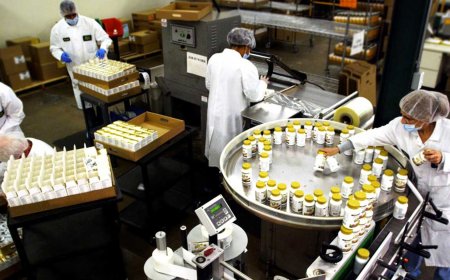The Spark of Life: Adenosine Triphosphate and the Future of Cellular Insight
Imagine your body is a bustling city. What powers the lights, the transportation, and all the factories? Just as a city needs electricity, our bodies need a constant supply of energy to perform every single action, from the blink of an eye to the complex firing of neurons in our brain. The universal energy currency that powers nearly every process within our cells is a remarkable molecule calledAdenosine Triphosphate, or ATP.
What is Adenosine Triphosphate?
At its core,Adenosine Triphosphateis a small molecule that packs a mighty punch. Think of it as a rechargeable battery for your cells. It's composed of three main parts: an adenine base, a ribose sugar, and a chain of three phosphate groups. The magic lies in the bonds connecting these phosphate groups. These are high-energy bonds, and when the outermost bond is broken, a burst of usable energy is released, powering a cellular process.
When ATP releases its energy, it loses a phosphate group and becomes Adenosine Diphosphate (ADP), the "used" battery. But the body is incredibly efficient. Through processes like cellular respiration (where we get energy from food) and photosynthesis in plants, that third phosphate group is reattached to ADP, recharging it back into ATP. This constant cycle of ATP being used and regenerated happens billions of times a minute in our bodies, ensuring the city of our cells never experiences a blackout.
Why is ATP So Important?
The significance of ATP cannot be overstated. It is the direct link between the energy we get from our food and the energy our bodies can actually use. Here are just a few of the critical functions powered by ATP:
- Muscle Contraction:Every movement you make, from lifting a finger to running a marathon, is fueled by ATP.
- Nerve Impulses:The transmission of signals throughout your nervous system, allowing you to think, feel, and react, is an energy-intensive process driven by ATP.
- Active Transport:ATP powers the pumps that move substances across cell membranes, often against a concentration gradient. This is crucial for maintaining cellular equilibrium.
- Synthesis of Molecules:Building complex molecules like DNA, RNA, and proteins requires a significant energy investment, all provided by ATP.
Given its central role, it's no surprise that the study of ATP is fundamental to understanding health and disease. When the intricate balance of ATP production and consumption is disturbed, it can be an indicator of cellular stress, metabolic disorders, or the presence of disease.
The Power of Adenosine Triphosphate Analysis
Because ATP levels are a direct reflection of cellular energy status, the ability to accurately measure them is a powerful tool in modern biology and medicine. This is whereAdenosine Triphosphate Analysiscomes in. By employing sophisticated techniques like high-performance liquid chromatography (HPLC) and mass spectrometry (MS), scientists can perform quantitative ATP measurements.
This type of analysis provides invaluable insights across a wide range of fields:
- Biomedical Research:Understanding the energy metabolism of diseases like cancer, neurodegenerative disorders, and heart conditions.
- Pharmacology:Evaluating how new drugs affect cellular energy pathways, helping to identify both therapeutic effects and potential toxicity.
- Toxicology:Using ATP depletion as an early marker for cellular damage caused by toxins.
- Sports Science:Studying how ATP dynamics influence muscle function and athletic performance.
By precisely measuring ATP and its related metabolites, researchers can gain a deeper understanding of the cellular machinery.Adenosine Triphosphate Analysisallows us to move beyond simply observing biological processes and start to quantify the energy that drives them. This opens up new avenues for diagnostics, therapeutic interventions, and a more profound comprehension of life itself. As we continue to unravel the complexities of the cell, the study of this single, vital molecule will undoubtedly continue to light the way.






































